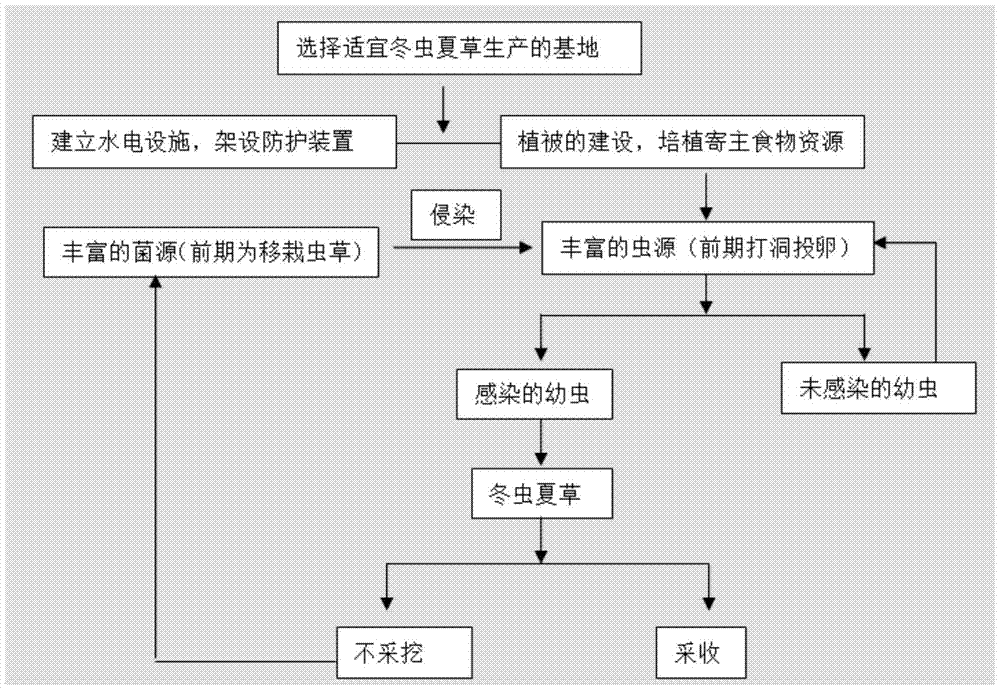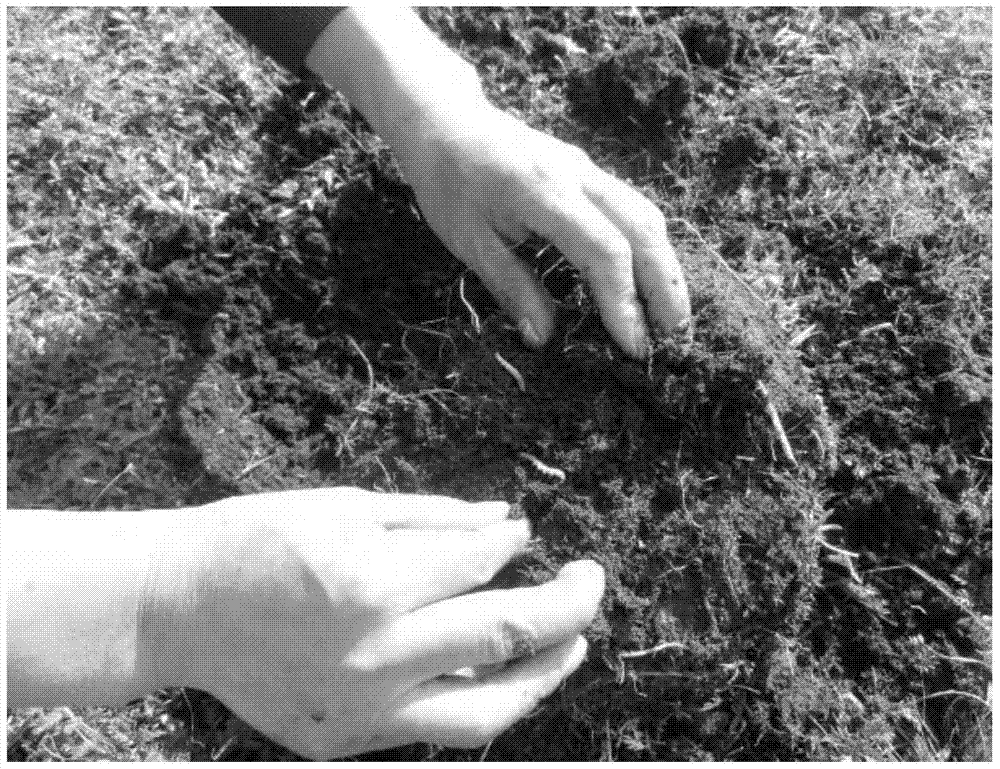A method for sustainable high-yield wild Cordyceps sinensis in alpine regions
A technology of wild Cordyceps sinensis and Cordyceps sinensis, which is applied in botany equipment and methods, horticulture, plant cultivation, etc., can solve the problems such as the great difference between Cordyceps sinensis and wild Cordyceps sinensis and the insufficient quantity of Cordyceps sinensis, and achieve the effect of sustainable industrialization development
- Summary
- Abstract
- Description
- Claims
- Application Information
AI Technical Summary
Problems solved by technology
Method used
Image
Examples
Embodiment 1
[0028] 1) Pre-construction
[0029] In the Nyingchi area of the Qinghai-Tibet Plateau that is suitable for the growth of Cordyceps sinensis, select cultivation sites (about 3000m above sea level), and build fences to prevent unrelated people from entering and leaving to graze, or destroying and stealing Cordyceps sinensis. Remove the weeds and bushes that are not conducive to the feeding and growth of Cordyceps sinensis in the base, fill in the caves of pikas and other wild animals, and lay mouse traps when necessary to reduce the natural enemies of the host and prevent them from harming Cordyceps sinensis. Vegetation is properly irrigated.
[0030] In June, select the seeds of Polygonum viburnum and Polygonum rotundum, and fern tuber as the provenance, mix well and then sow. If the soil moisture is not enough after sowing, it needs to be irrigated to allow the forage plants to grow naturally and the ecological environment to recover naturally for 2-3 years .
[0031] 2) I...
Embodiment 2
[0041] 1) Pre-construction
[0042] In the Qinghai-Tibet Plateau region, choose a shady slope with a slope of about 15 degrees to build a cultivation base, and set up a protective net to prevent unrelated people from entering and leaving to graze, or destroying and stealing Cordyceps sinensis. Remove the weeds and bushes that are not conducive to the feeding and growth of Cordyceps sinensis in the base, fill in the caves of pikas and other wild animals, and lay mouse traps when necessary to reduce the natural enemies of the host and prevent them from harming Cordyceps sinensis. Vegetation is properly irrigated.
[0043] In July, select the seeds of Polygonum viburnum and Polygonum rotundum, and the tubers of Bracken fern as the provenance, mix well and then spread. If the soil moisture is not enough after spreading, it needs to be irrigated, so that the forage plants can grow naturally, and the ecological environment will recover naturally for 2-3 years .
[0044] 2) Introdu...
Embodiment 3
[0054] 1) Pre-construction
[0055] Establish a cultivation base at an altitude of 4,000m on the Qinghai-Tibet Plateau, and set up a protective net to prevent unrelated people from entering and exiting for grazing, or destroying and stealing Cordyceps sinensis. Clear the weeds and bushes that are not conducive to the feeding and growth of Cordyceps sinensis in the base, fill in the caves of pikas and other wild animals, lay mouse traps if necessary, lay power grids to reduce host natural enemies and prevent them from harming Cordyceps sinensis, and establish water and electricity facilities. Properly irrigate vegetation.
[0056] In June, mix the seeds of Polygonum rotundum and Astragalus yunnanensis, and then spread them. Plants such as willow willow and willow willow will be cut. If the soil moisture is not enough, irrigation should be carried out so that the forage plants can grow naturally and the ecological environment will recover naturally. 2-3 years.
[0057] 2) Intr...
PUM
 Login to View More
Login to View More Abstract
Description
Claims
Application Information
 Login to View More
Login to View More - R&D
- Intellectual Property
- Life Sciences
- Materials
- Tech Scout
- Unparalleled Data Quality
- Higher Quality Content
- 60% Fewer Hallucinations
Browse by: Latest US Patents, China's latest patents, Technical Efficacy Thesaurus, Application Domain, Technology Topic, Popular Technical Reports.
© 2025 PatSnap. All rights reserved.Legal|Privacy policy|Modern Slavery Act Transparency Statement|Sitemap|About US| Contact US: help@patsnap.com


